Every year in early April Chepstow hosts a popular walking festival, and this year I led 16 visitors on a pilgrimage walk which started and finished on Devauden Village Green.
We started at the John Wesley Memorial and visited one converted chapel and six fascinating and active churches in surrounding villages and Devauden itself.
As a Hill and Moorland Leader with the Mountain Training Association I was delighted the route I put forward was chosen and was so well supported.
At each of the eight locations I gave a little talk about each place, and I thought it would be useful to pass on my notes for those wishing to try the route themselves, or perhaps visit a few of them individually or in smaller clusters. They are very special, and I would encourage you to visit.
For the record we walked about 12.5 miles, climbing 2,500 feet in three ascents along the way. We were moving for about five hours but with the stops and fascinating things to see and talk about the whole pilgrimage took 7.5 hours.
Big thanks to my friend and walking companion Tim Davis who brought up the rear, closed gates and helped bring the flock safely home.
We started at John Wesley Memorial – Devauden Green.
John Wesley’s first sermon in Wales on our village green on October 15th 1739 kickstarted the chapel movement in Wales.
John Wesley was a radical who took his message of “help the poor” as part of his Christian faith from the pulpit to outdoor spaces.
There is an information board and bust of the preacher on the Green where you can learn more, but one fact interests me which shows the vision and calibre of the man. He strongly renounced slavery when there were few voices of dissent. Slavery wasn’t abolished by the British until 1833, so he was preaching against it almost a hundred years before.
Hundreds attended his visit to the village, and his sermons led to the establishment of “preaching houses” across Wales. The earliest surviving example is in the nearby village of Earlswood.
From the memorial we walked through a section of Chepstow Park Woods and across the Glyn Valley to a converted Zion Chapel on the Kilgwrrwg ridge.
The converted Zion Chapel (1840s) was inspired by Billy Bray the “dancing preacher” who said that when he preached he felt the holy spirit compel him to dance, such was the energy and joy he received.
The chapel was sold in 1980 and later converted into a dwelling.
The brass oil lamps used in the chapel can be seen in Kilgwrrwg Church where we went next.
The organ was rescued and is in a shed on Howick Farm.
Church of the Holy Cross – Kilgwrrwg
The Church of the Holy Cross, Kilgwrrwg has been described as the most remote in Wales, sitting as it does at the top of a hill surrounded by meadows.
From our farm cottages it is about a 40-minute walk over the ridge and down into the valley below.
The name Kilgwrrwg comes from Cil (originally spelt with a C) – which is either the back of a hill or a hermit’s cell, while gwrrwg is a coracle. So, it is probably describing the shape of an upturned coracle, which was a hermitage.
Interestingly in recent times the barn we passed on the way to the church was home of one of the last hermits in Europe, Sister Ruth Furneaux, who later moved to a hermitage near Llandovery.
I sadly learned on my return from the walk that Sister Ruth died that morning after a long illness so I was very pleased I had mentioned her in my talk within the church she loved.
The circular churchyard suggests a Celtic, possibly pre-Christian, origin for the site – it is round so there are no corners, “no place for the devil to hide.”
It has been a site for Christian worship for nearly 1,300 years and it feels like it. It dates from between the 6th and 8th centuries. The present building is probably C13th.
The existing features are from the 16th, 17th and 19th centuries.
By the early 1800s it was derelict and being used as a cow/sheep shed, but in the 1820s it was restored by schoolmaster James Davies who I reference again when we get back to Devauden, the village he pretty much established..
The church has one bell made by the William Evans Foundry of Chepstow and I was very moved that as we walked up the hill towards the church, the bell was rung by Tina, Jonathan and Frances who formed a welcoming committee with chocolates and a spring-cleaned church and with candles lit to make us feel welcomed. It was a gesture very much appreciated by us all. Thank you.
The cross on the south side is medieval and is the only churchyard cross in Monmouthshire not mutilated by the Protestant puritans at the end of the English Civil war.
There is a grave to a local seaman who died on the last day of the First World War in 1918 and is said to be the last British serviceman to die in WWI. Jonathan Jenkins confirmed the story I had heard that he died when he fell off the gangplank coming back on board his ship after celebrating Armistice. He was 26 years old. How tragic.
Jonathan also told us about the stained glass window behind the altar. It apparently is a memorial to locals who died in the disaster that was Gallipoli in the First World War.
St Thomas à Beckett – Wolvesnewton
Onward then to Wolvesnewton’s church of St Thomas à Beckett dating back to 1254 with its ancient stone cross outside.
The area was part of a much larger Wentwood forest to the west but much was cleared by the Normans to create new towns – such as Shirenewton and Wolvesnewton.
The village and civil parish took its English name from the family of Lupus (Wolf) or Lovel, who were lords of the manor in the 13th and 14th centuries.
The parish church is dedicated to St Thomas à Becket who had been killed in 1170 and was canonised three years later. The church largely dates from the 13th century but was substantially restored in 1855–57. It has a 16th-century “saddle-back” roof, and three bells.
The church is constructed of old red sandstone blocks. The roof is Welsh slate.
The north side of the churchyard is locally called the “devil’s side” and has no graves.
The war memorial in the churchyard incorporates part of a large mediaeval stone cross which was reconstructed in 1920 incorporating some original features.
Inside on the south wall of the sanctuary is a two light stained glass window depicting Sir Galahad kneeling before the holy grail.
It includes the tree of knowledge of good and evil, and a dove symbolising peace and the sanctity of the place. It was designed by Walter Camm and installed in 1924. It has a very “arts and crafts” style of the 1920s and is well worth seeing.
15th century St Michael’s Church at Llanfihangel Tor-y-Mynydd.
The name of the area and the church in Welsh says exactly what it is.
Llan is church and it is dedicated to Mihangel (Michael) hence St Michael’s Church.
Tor y Mynydd locates the church in its hollow on the side of the mountain. Mynydd: mountain. Tor: hollow.
The church is the centre of an ancient religious site. The shape of the churchyard and surviving traces of a bank and ditch enclosure suggest this is a pre-conquest foundation. So pre-1066.
It is likely that the footings of the timber-built “Celtic” church which once stood here lie under the present church which began in Norman times.
Both the nave and lower chancel of the church are medieval, and the mullioned south window is a Tudor construction. The church was restored by Prichard and Seldon in 1852-4; the double bellcote was added at this time.
Among the most striking aspects of the church is retention of the stone pre-Reformation altar with its clearly defined five dedication crosses. The altar has been built into the floor immediately to the side of the wooden Victorian altar used today.
Outside, the churchyard cross platform base also survives.
The church is constructed of Old Red Sandstone rubble with a roof of Welsh slate
St Dennis Church, Llanishen
The village takes its name from the original dedication of the parish church to St. Isan or Issien, who was said to have been a follower of the 6th century Celtic St. Illtyd. The church is mentioned in the 12th century Book of Llandaff.
The existing church was completely rebuilt in 1852–54 and was dedicated to St. Dennis. Nothing of the original church remains.
It has tremendous views of the Vale of Usk from the west side where many of us had a break and admired the country we had just walked across.
Trellech Grange Church
The name “Trellek” derives from the Welsh “llech” meaning a conspicuous stone. It may have referred to a large stone which rested on a mound near the village, perhaps near “Rock Cottage”. However, the most conspicuous feature in the locality is a line of three standing stones known as “Harold’s Stones”, apparently a seventeenth century name. The “Tre” part of the name may reference the three ancient stones at Trellech or it is a prefix for town.
The area was once part of the manor of Trellech, but in 1138 it was granted to the monks of the then newly established Tintern Abbey by Gilbert de Clare, the Marcher lord of Striguil or Chepstow. The monks then cultivated it as a grange, making it the principal farm for food production for the Abbey.
The small parish church, with no known dedication, was largely rebuilt on the original foundations in 1861. The village sits above the Angiddy valley and provided homes for the iron workers who worked in the many iron works in the area,
There are two known “Squatters” houses in Trellech Grange which eventually became proper houses; the Duke of Beaufort allowed squatters as long as they paid a rent.
Trellech Grange, a large house nearby is sold subject to contract. It was on the market for £1.1 million.
Our final stop was to St James Church, Devauden where we were given a warm welcome by locals.
The name Devauden may be derived from the Welsh Ty’r ffawydden, or “house of the beech tree”. Until the mid-20th century the village was often known as The Devauden.
Devauden and the nearby hamlet of Fedw or Veddw (from Welsh Y fedw, birch grove) were originally clusters of illicit cottages built as a base by woodcutters, mule drivers, quarrymen and labourers linked to the wireworks at Tintern and the Angiddy valley. They paid rent to the Duke of Beaufort.
This population of forest dwellers was described as “the lowest class of society” and “prone to evil”.
In 743, Devauden was the site of a battle between the Britons (the Celts) and the Anglo-Saxons, in which Kings Aethelbald of Mercia and Cuthred of Wessex defeated the native Welsh.
In 1815, a school was built on the northern outskirts of the village. It was “the first National School in Monmouthshire”, and was built by the schoolmaster, James Davies, and paid for by the Duke of Beaufort.
In 1827, Davies converted the school to a church at his own expense and in 1837 he built a new school and a house for himself next to the church.
James Davies (1765–1849) was schoolmaster for over 30 years. I was surprised to learn he took up his position in his 50s.
He gained a strong local reputation for enduring personal hardship in order to help the poor in the community, linking us back to John Wesley’s mission. The school closed in 1986. The small parish church is dedicated to St. James.
The weather forecast for our walk had not been good but as it turned out it stayed dry for most of the journey and we even had a bit of sunshine. We arrived back at the Village Green to conclude just as the rain started.
Someone was smiling down on us pilgrims.
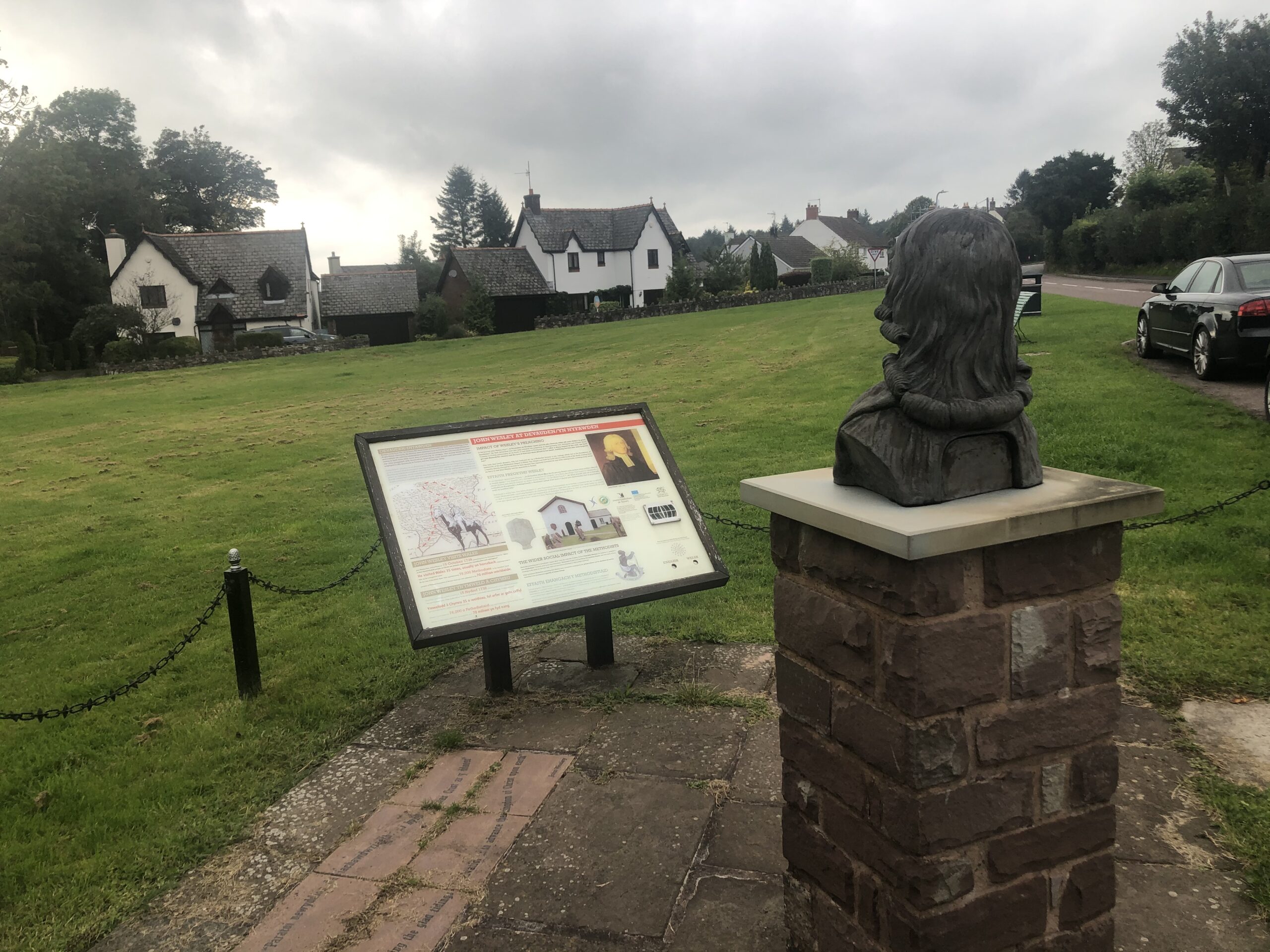
The walk started and finished at the John Wesley memorial on Devauden Village Green
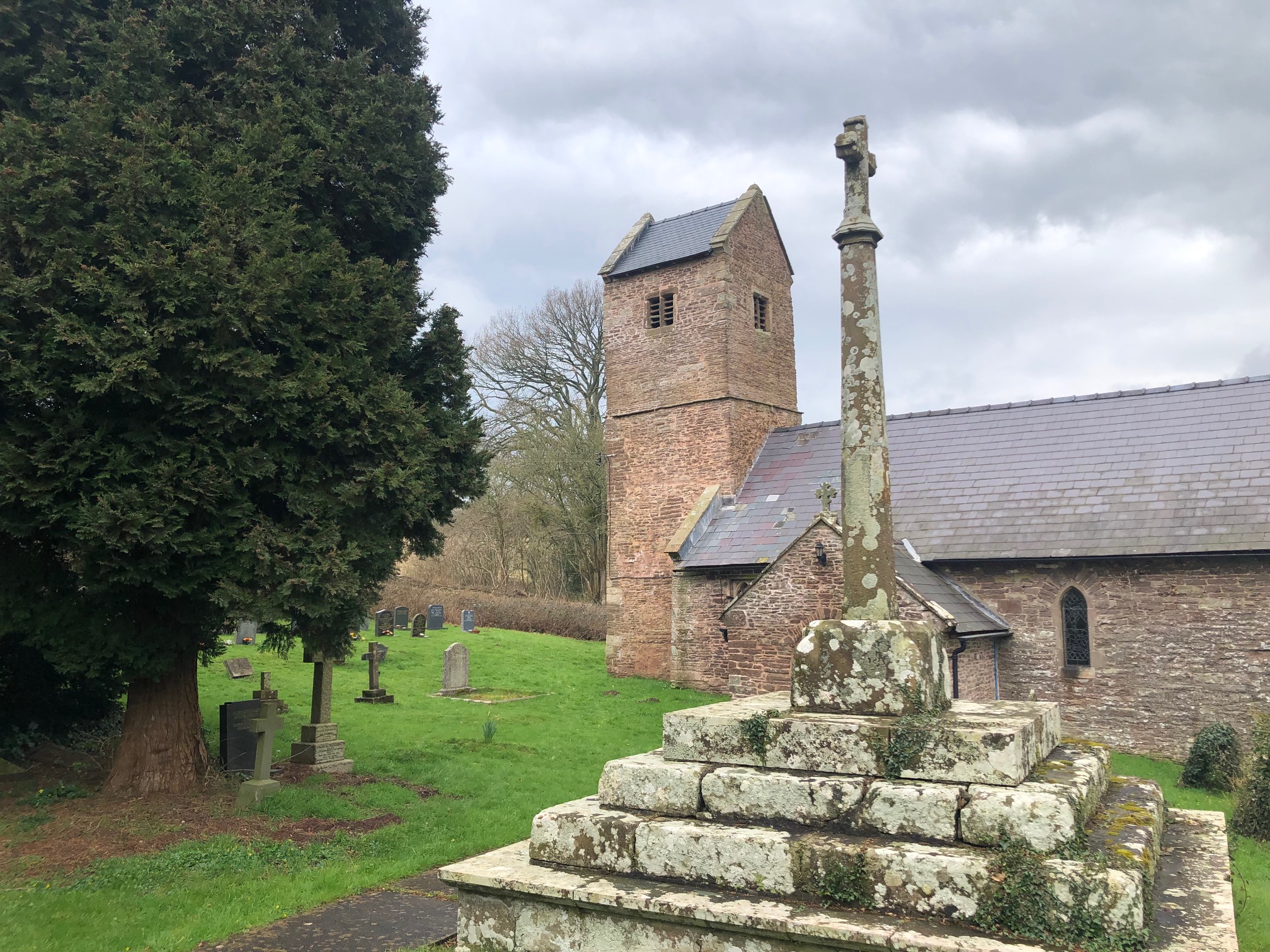
Wolvesnewton Church
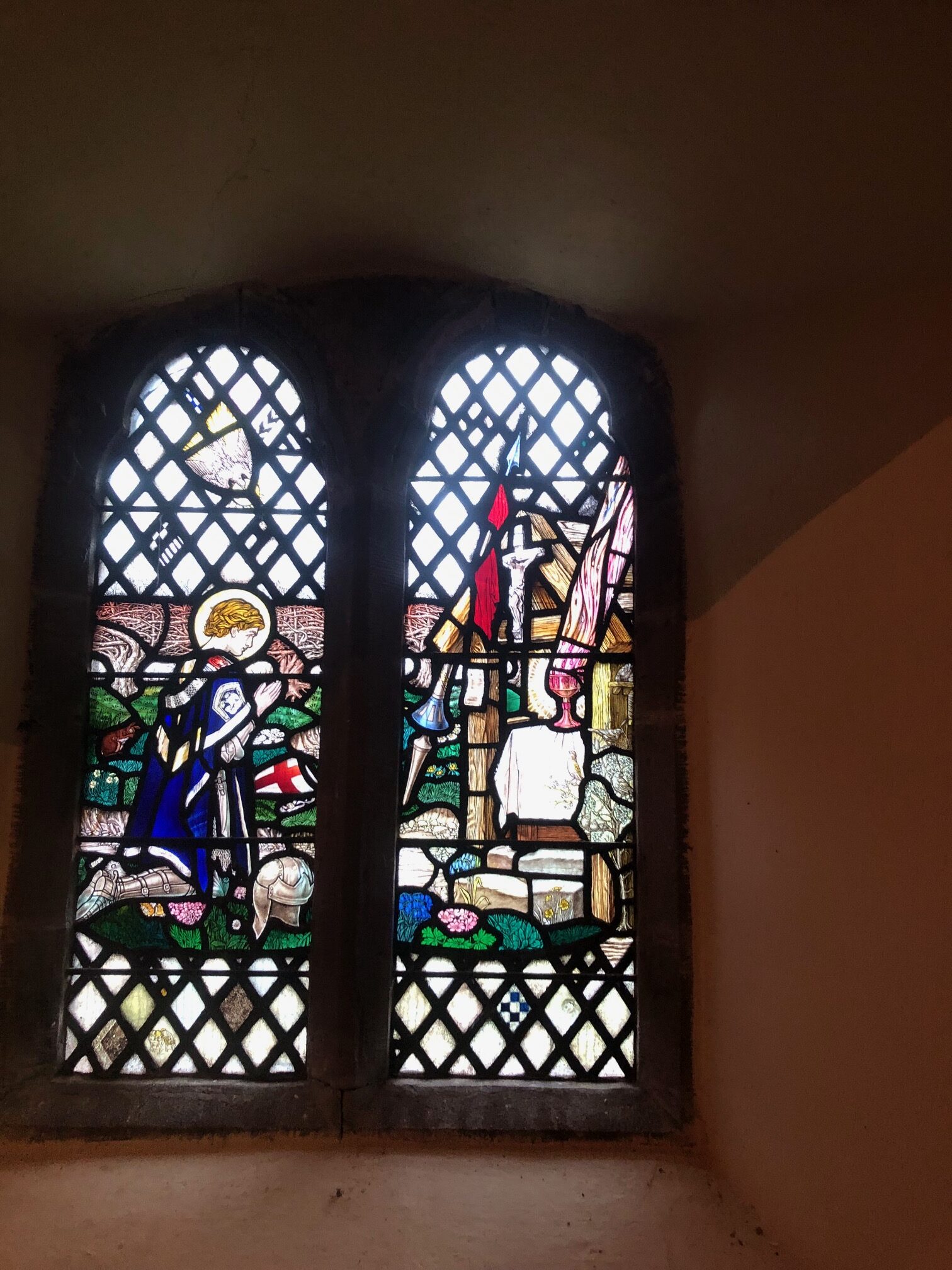
The search for the Holy Grail. Found it in Wolvesnewton.
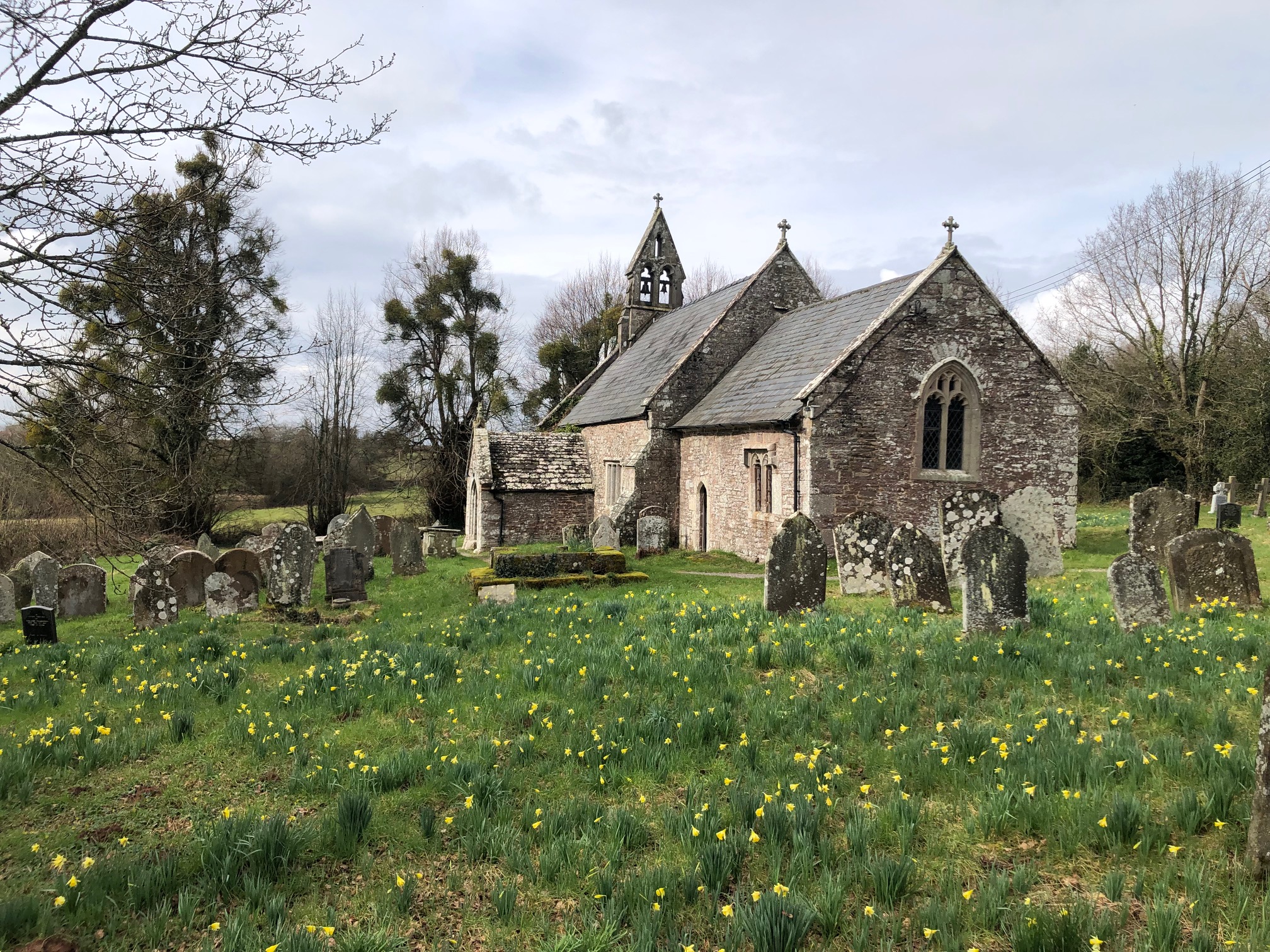
Llanvihangel Tor-y-Mynydd: St Michael’s Church in the hollow by the mountain
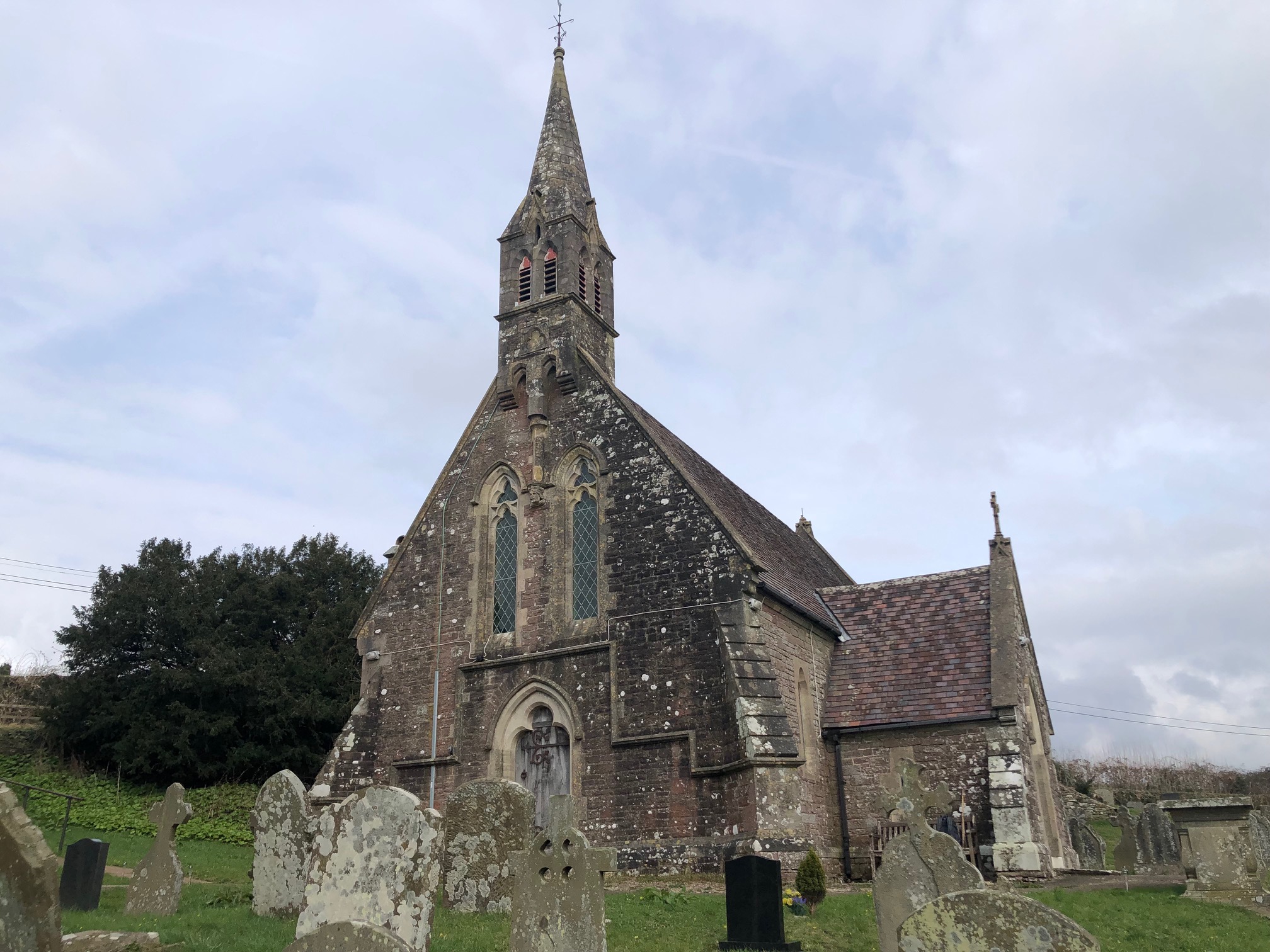
St Dennis at Llanishen. Views across the Vale of Usk are stunning.
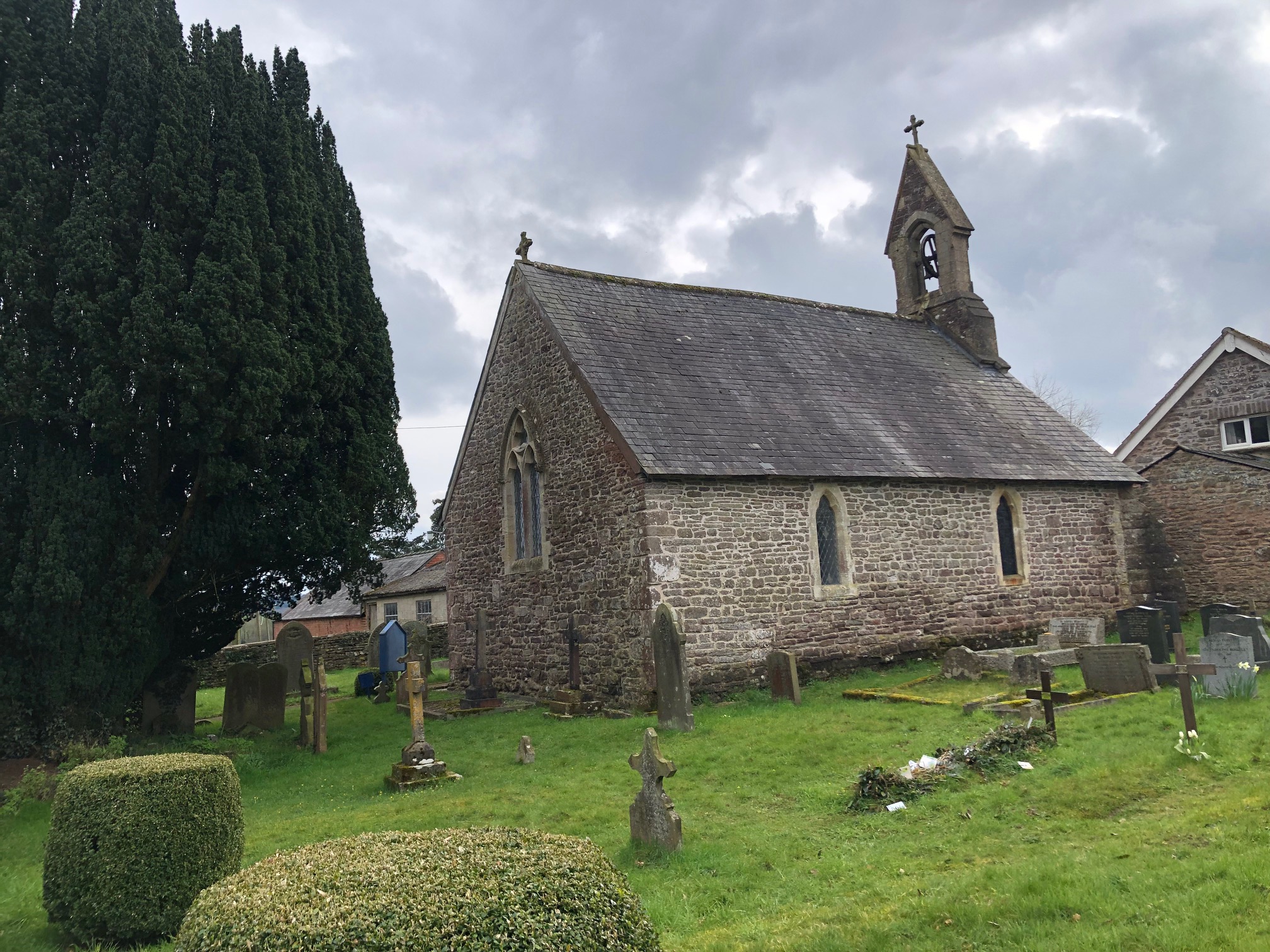
The little church at Trellech Grange.

Devauden Church started as a school. There is no graveyard in the village.

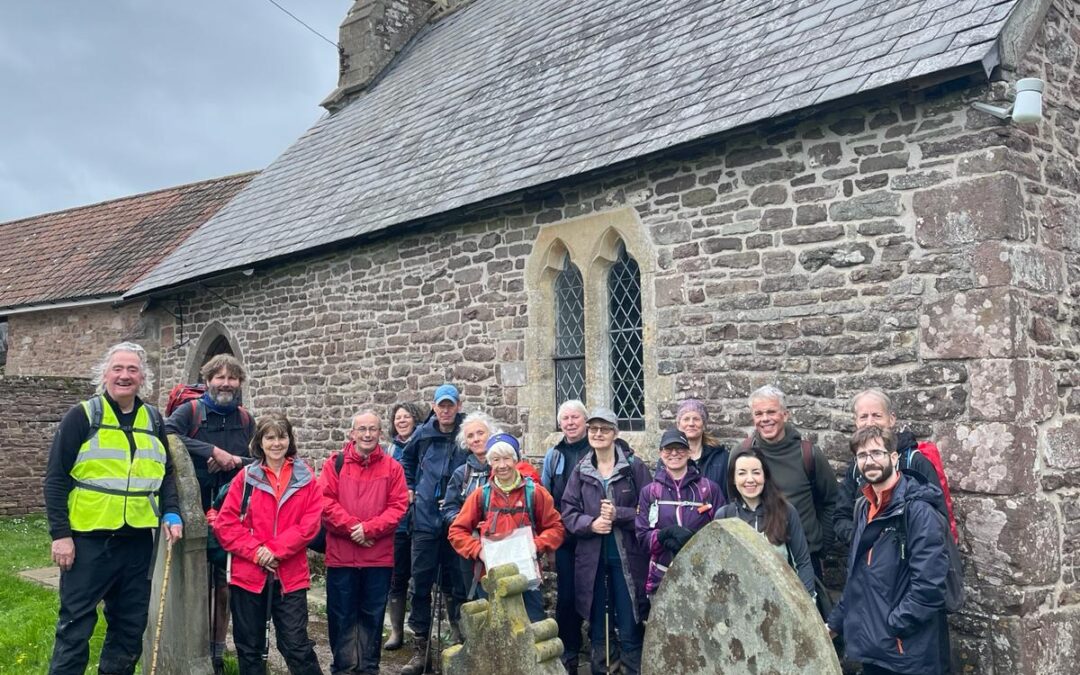
This was a wonderful and most memorable walk, and I am sure everyone attending was most grateful to John for the work he put into preparing, planning and leading us. His local knowledge, his research, and the light touch with which he communicated, really enriched the experience. His patience was saint-like as he helped me follow our route on my map! THANK YOU John!